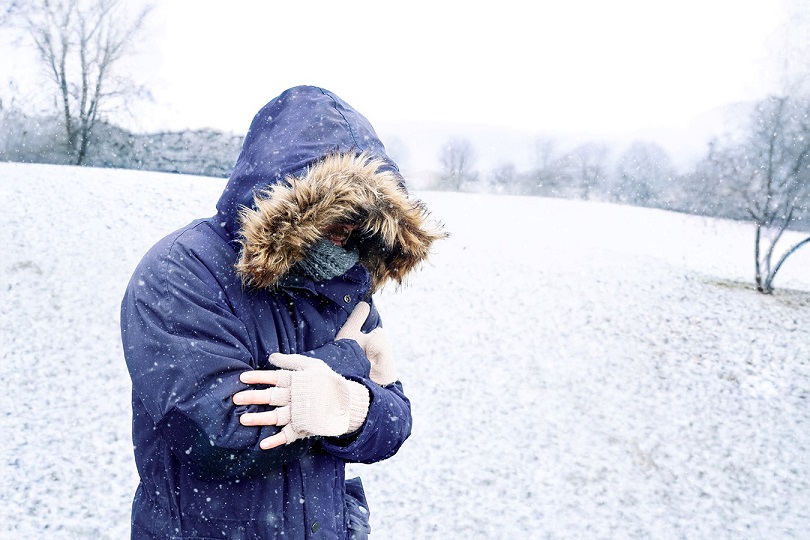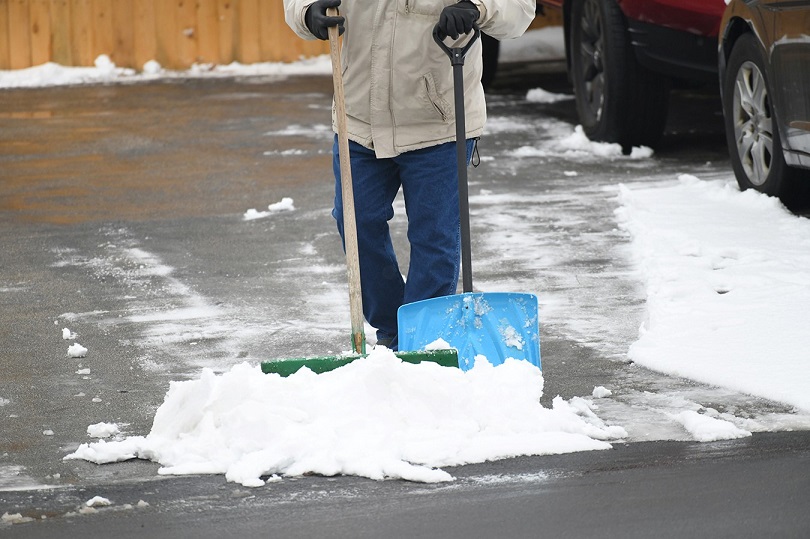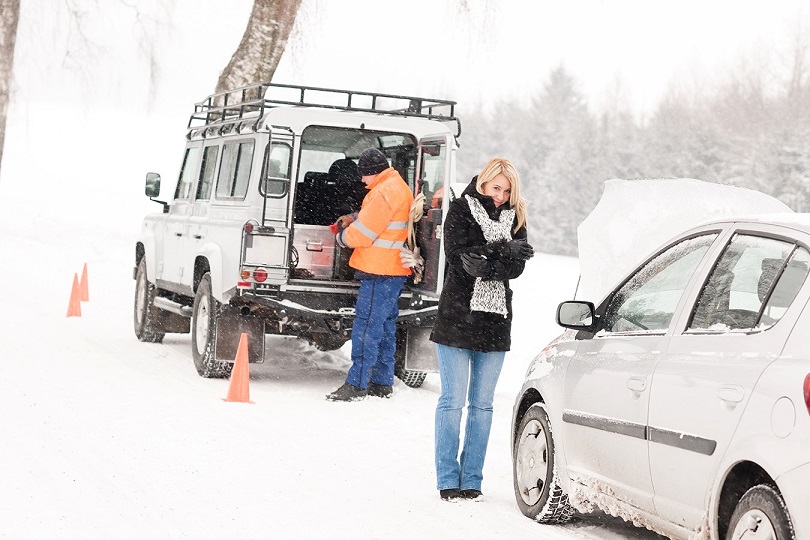Cold stress can happen in temperatures below 60 degrees, especially when factoring in other conditions such as wind and moisture. Personnel who are exposed to extreme cold or working in cold environments may be at risk of experiencing cold stress. Extremely cold or wet weather is a dangerous situation that can cause illness or injuries such as hypothermia, frostbite, trench foot, and chilblains (inflammation of small blood vessels).
 Man sensitive to cold freezing outdoor in the snow
Man sensitive to cold freezing outdoor in the snow
Prevention is Key
Here are a few important factors to help prevent cold stress:
- The type of fabric worn makes a difference. Cotton loses its insulation value when it becomes wet. Wool, silk, and most synthetics, on the other hand, retain their insulation even when wet.
- Wear at least three layers of loose-fitting clothing. Layering provides better insulation. Do not wear tight fitting clothing.
- Wearing an inner layer of wool, silk or synthetic helps to keep moisture away from the body.
- Wearing a middle layer of wool or synthetic helps to provide insulation even when such materials get wet.
- Putting on an additional protective layer against wind and rain is recommended. Make sure the layer allows some ventilation to prevent overheating.
- Stay dry in the cold because moisture or dampness (e.g. from sweating), can increase the rate of heat loss from the body.
- Keep extra clothing (including underwear) handy in case you get wet and need to change into something dry.
- Wear a hat or hood to help keep your whole body warmer. Hats reduce the amount of body heat that escapes from your head.
- If needed, wear a knit mask to cover the face and mouth.
- Use insulated gloves to protect your hands (wear water resistant gloves if necessary).
- Wear insulated and waterproof boots (or other protective footwear).
 Removing snow on driveway with shovel
Removing snow on driveway with shovel
Most of us that have worked outside during cold weather and have experienced some of the early signs and symptoms of cold stress as listed below:
- Redness of skin – frostbite could develop, watch for gray/white patches
- Numbness in the affected part (usually extremities: ears, nose, fingers, toes)
- Affected area feels firm or hard
- In severe cases, blisters may occur in the affected part
- If your body begins to shiver, stomp your feet to generate heat
- As the body temperature continues to drop, symptoms will worsen, and shivering will stop
- When in severe cold, you may lose coordination and fumble with items in your hands. It is not uncommon to become confused and disoriented.
 Mechanic assists woman on roadside with broken down car in snow
Mechanic assists woman on roadside with broken down car in snow
Now that you know what to look for during times of extremely cold temperatures, what should you do if you, a co-worker, a friend, or a family member experiences any of these symptoms?
- Immediately take a break and try to get into a warm vehicle or workplace.
- Contact your supervisor immediately.
- Drink warm sweetened fluids (no alcohol).
- Remove your shoes, boots, and wet socks or any other clothing that is wet.
- Dry your feet or affected areas.
- Loosely cover and protect the area from contact.
- Do not rub the affected area to warm it because this action can cause more damage to frozen skin cells.
- Do not apply snow/warm water. Do not break blisters.
If at work, call the Aeronautical Center’s emergency phone number (405)954-3444 immediately. If located outside the Aeronautical Center call 9-1-1, seek medical assistance as soon as possible.